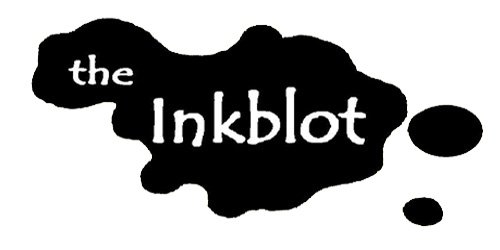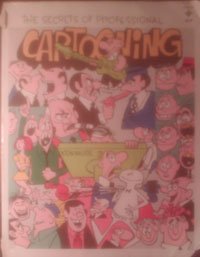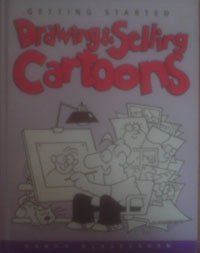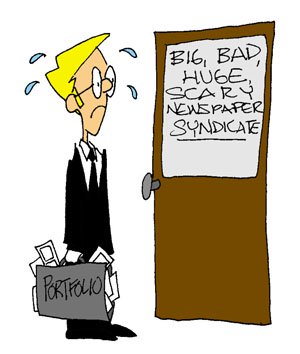
May 01, 2009
The Inkblot is your cartooning information resource. From art supplies to drawing lessons to tips from the pros, you'll learn what it takes to be a cartoonist!
If you like this ezine, please tell your friends and family about it. Remember, it's free! If this was forwarded to you by a friend, do me (and yourself) a favor and subscribe! Just click the link below:
Inkblot Subscribe Page
Contents:
- 1. Issue Recap
- 2. A Couple of Resources
- 3. Gettin' Fresh
- 4. Know Your Subjects and Audience
- 5. A Final Word
Issue Recap
Welcome to another fabulously interesting issue of The Inkblot, the Number One electronic newsletter about Cartooning!If this is the first issue of The Inkblot you’ve read, here are some highlights from past issues.

In issues 1 – 4, we discussed the Essential Tools of the Cartoonist; the ones he or she just can’t live without. We’ve looked at many different types of drawing tools, and have identified which ones work best for cartoonists. This is really good information that I’ve picked up during my many years of drawing cartoons, so if you haven’t read these, please review them. They are available on the Inkblot Back Issues page for free at
https://www.coolcartooning.com/back_issues.html.
In issue 5, we began a discussion about getting ideas for cartoons. There are many different types of cartoons, but my experience has been in humor cartoons, so I’ve narrowed the discussion to getting funny ideas. The current issue is a continuation of this discussion, so please review it if you haven’t already. Just go to
https://www.coolcartooning.com/back_issues.html.
In issues 6 and 7 we took a break to talk with two cartoonists who are currently working in the field. We discussed their personal views on cartooning, the tools they use, and the methods they use. This is incredible information, so if you haven’t read them, please do! It’s the next best thing to actually meeting a cartoonist in person! Just go the Back Issues page at
https://www.coolcartooning.com/back_issues.html
to review them for free!
A Couple of Resources

Before we continue with our discussion about developing funny ideas, let me just mention that many of these methods are ones I personally use. They are the product of my many years of experience in drawing cartoons. Aspects of many of these methods and steps have also been gleaned from the dozens and dozens of books on drawing I’ve read over the years.
One of my favorite books on cartooning is The Secrets of Professional Cartooning, by Ken Muse. It’s the first book on cartooning I ever read. It’s hard to find because it’s no longer in print, but it is one the best instruction manuals I’ve ever come across. Written by a professional cartoonist who drew his comic strip in the 1960s, some of the info is out-of-date, but the instruction on drawing and getting ideas are timeless! I’ve read this book hundreds of times, and I still pull it off the shelf every once in a while. To locate it, check out your local used bookstores, or go to
www.amazon.com.

Another book I really like is Getting Started Drawing & Selling Cartoons, by Randy Glasbergen. This book is a bit more contemporary, and is still in print. It was written by a professional cartoonist whose cartoons can be found in hundreds of newspapers and magazines around the world. You can order this book from just about any bookstore, or at
www.amazon.com
Gettin' Fresh
When we last discussed getting funny ideas for cartoons, we talked about doing everything you can to incorporate cartoons and humor into your life. Read all the cartoons you can get your hands on, and try to pick them apart, and find out why they are funny. Narrow down the type of humor that really grabs you, and study all the cartoons you can find that uses that particular type of humor. Remember, NEVER steal ideas from other cartoons. Learn from them, but always come up with your own personal style.Another thing you can do to surround yourself with humor is to read joke books, humor novels, and books written by comedians. Some examples are the science fiction novels of Douglas Adams, the humorous autobiographical works of Bill Cosby, Tim Allen, and Paul Reiser. These are just a few of the ones I use, but there are hundreds of others. The more you study humor, the more you’ll be able to see humorous things happening around you, and the easier it will become to nail down those funny ideas.
When thinking up funny ideas, be sure they are fresh and original. This is a point Glasbergen makes in his book, Getting Started Drawing & Selling Cartoons. Original ideas are much funnier, and will get better attention, especially if you’re planning on selling your cartoons to a newspaper or magazine. There are a lot of cartoonists out there, and we’re all very competitive. So the more original and creative your ideas, the better. You can use old jokes if you put a new, unique spin on them, but otherwise, try to avoid ideas that have been “done to death”.
Know Your Subject and Audience

You also want to be sure that, when thinking up cartoon ideas, to concentrate on subjects you know and like. Writers are often instructed to “write about what you know”. This is true, to a point. The best ideas often come out of your own experiences. If you are a parent, for example, you may be able to get a lot of great cartoon ideas by looking at your family. However, you don’t have to be an astronaut to write jokes about aliens. But it would be difficult to make a joke about football, if you’ve never played the game. As Ken Muse says in his book, if you get something wrong, people will let you know. So make sure you know something about your subject before you spend time writing jokes and drawing cartoons about it. Research isn’t always fun, but it always pays off!
Whether you’re planning to sell your cartoons, or if you’re just drawing for fun, it’s a good practice to make sure you know who your potential audience will be. Who are you drawing for? Who will take the most pleasure from your cartoons? When I was still pretty new at the cartooning biz, I sent off a bunch of cartoons to a newspaper in Illinois. I didn’t bother to research it, or to find out what type of audience the newspaper reaches. I just chose a dozen cartoons out of the pile, and mailed them off. A week or so later, I received a rejection letter, in which I was gently admonished to “know the audience before submitting”. So, if you’re drawing a cartoon panel or strip about family life, you don’t want to send it to a magazine about pets. You want them to go instead to family-oriented magazines. Even if your desire is to be syndicated in a newspaper, like Garfield or Peanuts, you still have to figure out who your primary audience is. This will help drive many of your jokes, and the mood of the entire cartoon. My recommendation is to spend a lot of time reading different magazines and newspapers, to see what kinds of cartoons they print. Then, once you have cartoons to sell, you’ll be able to better select the right cartoons for the right publications. You might also want to pick up the most recent issue of The Artist’s Market. This is a big fat book, published every year, packed full of different markets for all kinds of different art, including cartoons. Each publisher has a little blurb that tells a little bit about what type of art they are looking for. The Artists’ Market can be found in just about any bookstore or library.
A Final Word
Lastly, make sure you draw every day. Schedule your time daily so that you always have time for drawing. I know most of us think of “schedule” as a dirty word, but I find having a schedule very helpful. I’m easily distracted by things, so I personally need a definite schedule to help me regulate my day. Life can be hectic, but it can be managed with a little work. During your drawing period, have a little place set up where you can be alone, away from the noise of the world. If you have the space, set up a cartoon studio in a separate room. If not, take your drawing board into a quiet corner somewhere. Whatever works best for you.If you’re ever stuck for an idea, doodling is one of the best things to help get you out of the rut. At least it is for me. When I just let my pencil wander across the page on its own, I almost always come up with an idea sooner or later. When writers can’t think of something to write about, they call it “writer’s block”. But it doesn’t have to be a “block”. Some cartoonists will take a walk to help their creativity start flowing again; others will watch a little TV or listen to the radio. Find what works best for you.
That’s all the time we have for this issue. There is a lot more information about cartooning in the literally hundreds of cartoon books out there. Pick up a few and study them cover to cover! Never give up, and never get discouraged. You can do anything you set your mind to.
Until next issue,
Happy Drawing!
Michael Richards
www.coolcartooning.com